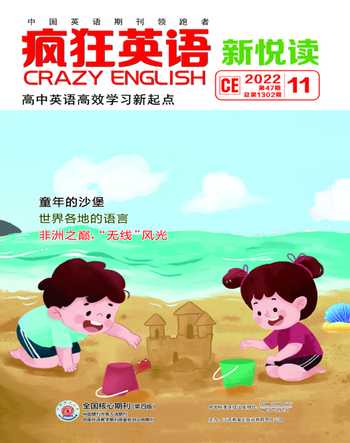中国传统纹样保护者
2022-05-30张来彬
张来彬
在中国传统艺术宝库中有一支奇丽的花朵,人们称它为“吉祥图案”。它那丰富的内涵、善美的理想,正是中华民族文化的象征。
1 Traditional decorative patterns in China often carried promising meanings and could be seen almost everywhere in China. Many Chinese artists have been considering various ways to pass down this culture to the next generation.
2 Huang Qingsui, an art designer, numbers among these artists. He started collecting decorative patterns from rural areas in 2013 and recorded them in an online database that now contains more than 20,000 traditional decorations. The 30?something Huang has been seen as a savior of patterns from different ethnic groups and dynasties throughout Chinese history. “The database is like a dictionary of patterns for modern artists,” he said.
3 Huangs database is called Wenzang. It covers more than 200 themes, including various dynasties and art forms. More than 20,000 decorative patterns from 90 percent of the country have been catalogued in the database.
4 Managing the database involves three steps. The first involves collecting these traditional patterns through various channels, including investigating and visiting places where these decorations may have been passed down or contacting museums and experts. After tracking down a decorative pattern, Huang and his team take photos and digitally reproduce the patterns on computer. During the process, they often need to restore damaged patterns, especially when it comes to decorative patterns on clothing, as they tend to be faded or misshapen. The last step involves recording the data, checking and correcting any mistakes that may have occurred (發生) during the earlier steps.
5 The beauty contained in traditional patterns has inspired Chinese designers to find their own style when designing their works covering life necessities such as clothing, cups, porcelains and statues. This allows traditional patterns to be more frequently seen in peoples daily lives and people can appreciate the culture hidden within them.
6 “In 2013, when I first threw myself into the work of preserving traditional decorative patterns, those who gave me support and encouragement were mostly middle?aged people over 40. However, now most of our followers are in their 20s. They have great enthusiasm for traditional culture,” Huang said.
1. Which word can be used to describe Huangs database?
A. Average.
B. Meaningful.
C. Complicated.
D. Useless.
2. What can be learned about Wenzang?
A. Its a language dictionary for students.
B. Its a history book about various dynasties.
C. It includes most of traditional Chinese patterns.
D. It shows different art forms from the world.
3. What does paragraph 4 mainly talk about?
A. Daily life of Huangs team members.
B. Ways to restore damaged patterns.
C. Why Huang decided to set up his database.
D. How Huangs database is managed.
4. What can be inferred from the last paragraph?
A. Few people supported Huangs work.
B. Young people are becoming interested in traditional culture.
C. Huang has protected traditional decorative patterns for twenty years.
D. Middle?aged people show little interest in traditional decorative patterns.
Useful expressions
traditional decorative patterns 传统纹样
carry promising meanings 寓意吉祥
pass down...to the next generation 把……传给下一代
track down 搜寻到;跟踪找到
the beauty contained in traditional patterns 蕴藏在传统图案中的美
throw oneself into 积极从事;投身于
have great enthusiasm for traditional culture 对传统文化有极大的热情
